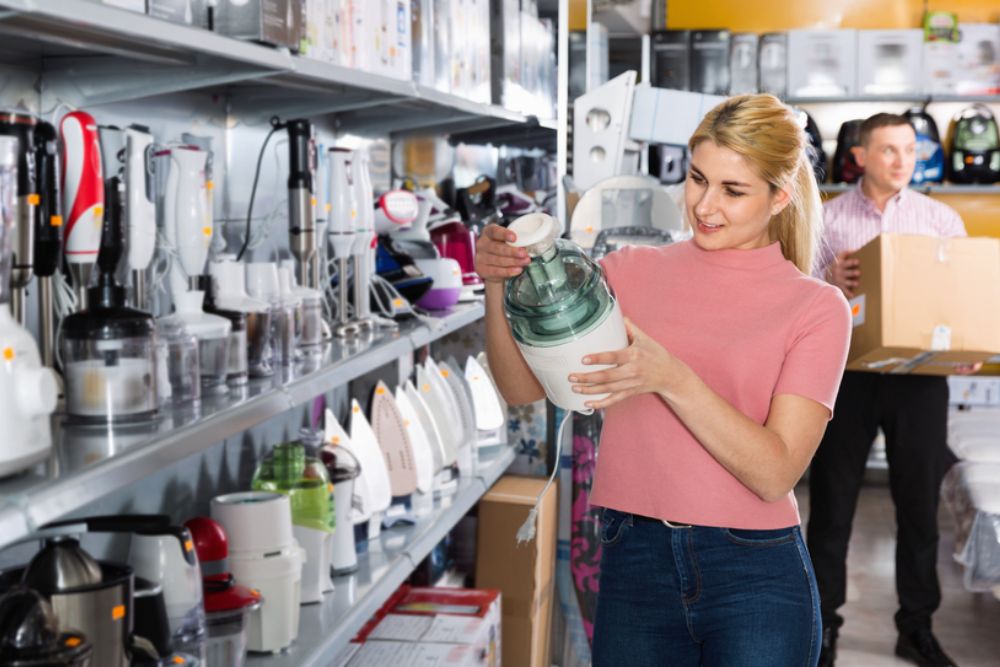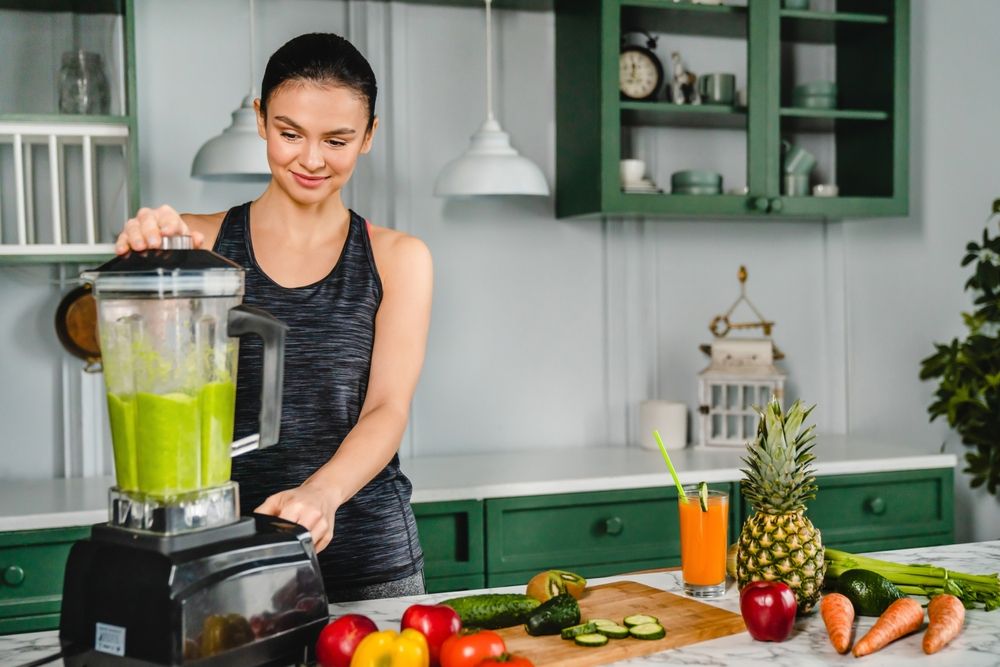Blenders have long been a kitchen staple for whipping up smoothies, soups, sauces, and more. But if you haven’t bought one in a while, you may be surprised by how much blender technology has advanced. Today’s models go beyond simple on/off switches—incorporating features like app connectivity, specialized blades, vacuum systems, and more powerful motors. This guide explores the cutting-edge innovations in modern blenders, helping you figure out which new features might actually improve your daily cooking and beverage routine.
1. Enhanced Motor Power and Durability
Why It Matters
A blender’s motor is its heart, driving the blades through tough tasks like crushing ice, pureeing fibrous vegetables, and mixing thick nut butters. Recent models often boast increased wattage or horsepower, enabling them to tackle more challenging blends efficiently.
What’s New
- Higher Wattage: Some premium blenders now reach 1,500–2,000+ watts, producing enough torque to crush ice to snow-like consistency or blend tough roots (like ginger or turmeric) seamlessly.
- Better Cooling Systems: Manufacturers are using improved ventilation or internal fans to keep high-powered motors from overheating, prolonging the blender’s life.
- Longer Warranties: Established brands often back up their robust motors with extended warranties (up to 5–10 years), reflecting confidence in the product’s durability.
Takeaway
If you frequently crush ice, blend thick ingredients, or want a machine that handles anything from green smoothies to nut milks, a higher-watt, sturdier motor can save time and frustration. Just remember, more power often comes at a higher price.
2. Vacuum Blending Technology
Why It Matters
One of the biggest recent innovations in the blending sphere is vacuum blending. Oxygen exposure can lead to oxidation in certain ingredients—reducing nutrient levels and causing color or flavor changes. Vacuum blending aims to mitigate this issue.
How It Works
- Vacuum Feature: Before blending, the machine sucks out most of the air from the jar, creating a low-oxygen environment.
- Benefits:
- More Vibrant Color: Less browning in produce-based blends (like apples or leafy greens).
- Longer Freshness: Smoothies can remain fresher-tasting for hours without immediate separation or color dullness.
- Potential Nutrient Preservation: Lower oxidation might help retain certain vitamins longer, though the exact impact can vary.
Takeaway
Vacuum blenders may interest health enthusiasts or those who prep smoothies in advance. However, they often cost more and involve extra steps—like sealing and unlocking the vacuum lid—so consider whether the benefits justify the price.
3. Smart Features and Connectivity
Why It Matters
In our hyper-connected world, many kitchen appliances now come with app integration, pre-programmed recipes, or digital controls. Blenders have joined the trend, offering advanced functionality that can simplify usage or push your creativity.
Notable Smart Enhancements
- App Control: Some blenders pair with mobile apps to control speed, time, or access preset recipes. You can initiate blending or stop it remotely (as long as you’re in Bluetooth range, for instance).
- Automated Programs: Instead of guessing blend times for soups or nut butters, one-button programs run through cycles of pulse, pause, and full speed to achieve consistent results.
- Recipe Guides: Built-in screens or companion apps guide you step by step—useful if you love exploring new smoothies or dips without manually tinkering with speeds.
Takeaway
If you’re a fan of convenience or enjoy a tech-savvy kitchen, these digital features can reduce guesswork. If you prefer a simpler approach or find app-based controls superfluous, a more traditional dial or manual interface might suffice.
4. Improved Blade and Jar Design
Why It Matters
Even a powerful motor can underperform if the jar shape and blade configuration fail to circulate ingredients effectively. Recent blender models use more sophisticated geometry to pull food toward the blades, speeding up blending and minimizing chunks.
Design Upgrades
- Contoured Jars: Some have ridges or patented shapes that enhance vortex creation, ensuring faster, more uniform results.
- Multi-Pronged Blades: Instead of the classic two-blade cross, many modern units feature four or six-blade systems, potentially reducing blending time.
- Safe Removal: Certain designs let you detach the blade assembly quickly for thorough cleaning (while also preventing leakage).
Takeaway
If your older blender frequently leaves unprocessed lumps, upgrading to a more advanced blade/jar design might be a game-changer—less time scraping or re-blending.

5. Noise Reduction Features
Why It Matters
Let’s face it, blending at 6 AM or late at night can disturb household members (or neighbors in thin-walled apartments). High-power blenders can get loud, so some makers have introduced noise-dampening solutions.
What to Look For
- Enclosed Designs: Some commercial-grade or specialized home blenders come with a partial shield or enclosure over the jar, significantly reducing decibel levels.
- Insulated Motor Housing: Extra insulation around the motor can cut down on vibration noise.
- Rubberized or Silicone Seals: Minimizes jar rattle or the friction between the motor base and container.
Takeaway
If you’re sensitive to noise or have a small living space, consider models featuring some noise reduction technology. Just note these can be pricier, and enclosures might make them bulkier.
6. Personal/Portable Blender Innovations
Why It Matters
Another offshoot in the blender category is single-serve or portable models, ideal for busy individuals wanting quick smoothies or shakes on the go. Modern versions might come with a rechargeable battery, so you can blend anywhere.
Highlights
- Travel Cup Integration: Many personal blenders let you remove the blending cup to use as a to-go container—less dishwashing.
- USB Rechargeable: Some can power up via USB, letting you blend at work or during travel.
- Reduced Power: Typically less forceful than full-size countertop machines, meaning they’re best for softer fruits or partial ice rather than big chunks.
Takeaway
If your priority is convenience and portability (like taking a post-gym protein shake), a modern personal blender might be your best bet. For serious cooking tasks, a robust countertop model still rules.
7. Evaluating Brand Reputation and Customer Support
Why It Matters
A fancy new feature set won’t mean much if the blender breaks down quickly or lacks long-term parts availability. Reputable brands often have better track records for reliability, warranties, and helpful customer service.
What to Consider
- Warranty Length: Some high-end blender brands offer 5–10 years of coverage. Budget options might only have 1–2 years.
- Replacement Parts: Blades, gaskets, or jars can wear out. Check if they’re easy to order or expensive.
- Reviews: Real user feedback reveals if the fancy new features function as advertised or if the blender struggles over time.
Takeaway
While you needn’t always pick the priciest brand, leaning toward those with proven durability and strong warranties can minimize headaches down the line.
8. Maintenance and Cleaning
Why It Matters
Blender longevity and user satisfaction heavily depend on how easy it is to clean. Some advanced technologies (like vacuum blending or multi-part blade systems) can complicate daily care if not designed thoughtfully.
Maintaining Your Blender
- Dishwasher-Friendly: Many jar and blade assemblies are top-rack safe, though check instructions.
- Self-Clean Settings: Some new high-end models let you add water and a drop of dish soap, then run a cleaning cycle.
- Removable Blades: Makes thorough cleaning easier—especially if you frequently blend sticky or oily ingredients.
Takeaway
Convenient cleanup ensures you actually use your blender instead of letting it collect dust. Features like a self-clean cycle or easy-disassemble design can reduce everyday friction.
Blenders have come a long way from basic multi-speed machines. Modern features—like high-powered motors, advanced blade geometry, vacuum blending, and even app connectivity—expand what’s possible in your home kitchen. For many, a standard high-speed blender is enough to handle daily smoothies and basic meal prep. But if you crave top-tier precision, ultra-smooth purees, or unique tasks (like vacuum blending or quiet operation), specialized models can significantly enhance your culinary life.
Whether you need a bullet blender for portable convenience, a super-powerful machine for frequent use, or a feature-rich model with noise reduction and automated programs, thorough research can help you dodge buyer’s remorse. Look into brand reliability, read user reviews on actual performance, and consider how much you’ll realistically use the extra bells and whistles. With the right choice, you’ll find a blender that effortlessly transitions from morning protein shakes to velvety soups and luscious sauces—keeping you updated on the latest technology while simplifying your kitchen routine. Enjoy blending your way to delicious, healthy creations!





